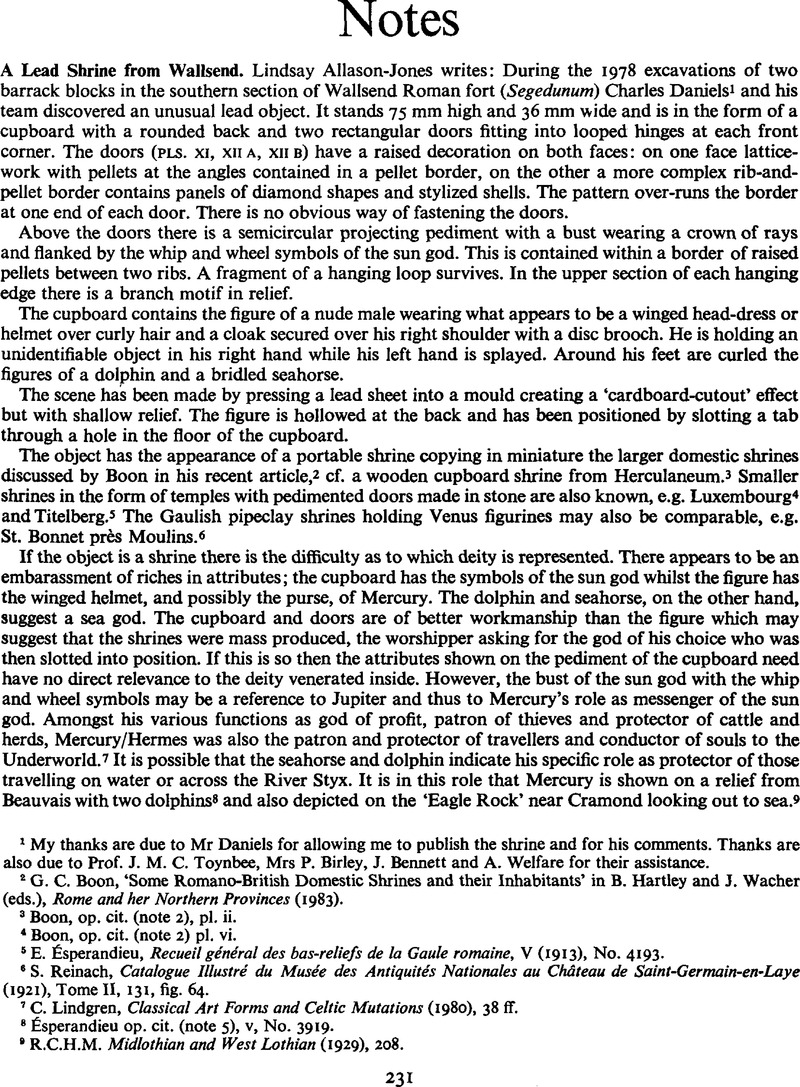Published online by Cambridge University Press: 09 November 2011

1 My thanks are due to Mr Daniels for allowing me to publish the shrine and for his comments. Thanks are also due to Prof. J. M. C. Toynbee, Mrs P. Birley, J. Bennett and A. Welfare for their assistance.
2 Boon, G. C., ‘Some Romano-British Domestic Shrines and their Inhabitants’ in Hartley, B. and Wacher, J. (eds.), Rome and her Northern Provinces (1983).Google Scholar
3 Boon, , op. cit. (note 2), pl. ii.Google Scholar
4 Boon, , op. cit. (note 2) pl. vi.Google Scholar
5 Ésperandieu, E., Recueil général des bas-reliefs de la Gaule romaine, V (1913), No. 4193.Google Scholar
6 Reinach, S., Catalogue Illustré du Musée des Antiquités Nationales au Château de Saint-Germain-en-Laye (1921), Tome II, 131, fig. 64.Google Scholar
7 Lindgren, C., Classical Art Forms and Celtic Mutations (1980), 38 ff.Google Scholar
8 Ésperandieu op. cit. (note 5), v, No. 3919.
9 R.C.H.M., Midlothian and West Lothian (1929), 208.Google Scholar
10 Ross, A., Pagan Celtic Britain (1967), pl. 86b.Google Scholar
11 Z. Bánki, Az István Király Múzeum Gyüjteménye. Római Kori Figurális Bronz, Ezüst és Ólom Tárgyak (1972), 42; 43; nos. 29; 30.
12 Toynbee, J. M. C., Art in Britain under the Romans (1964), 345 ff.Google Scholar; Toller, H., Roman Lead Coffins and Ossuaria in Britain (1977).Google Scholar
13 Vindolanda Museum: Ref. No. 2033.